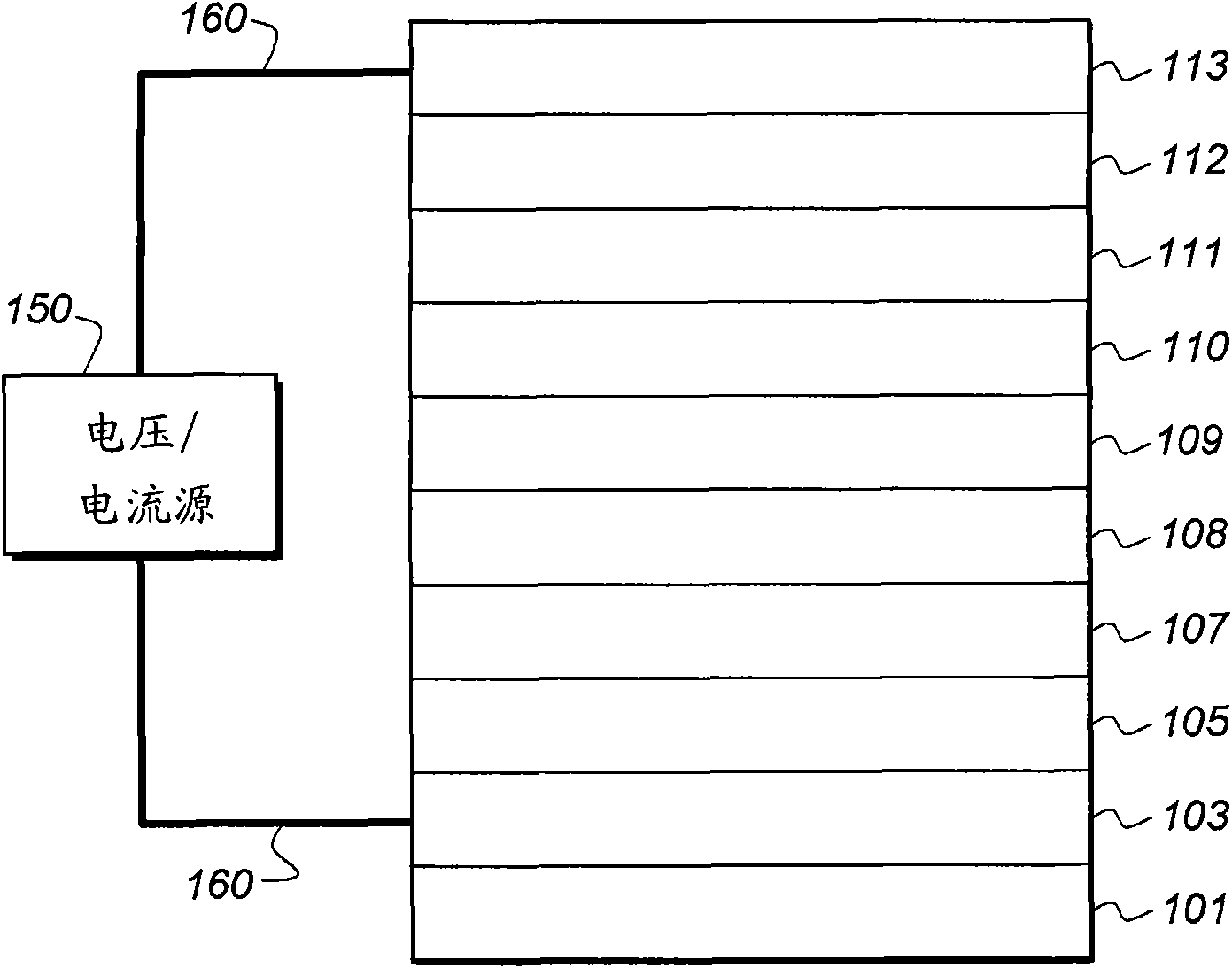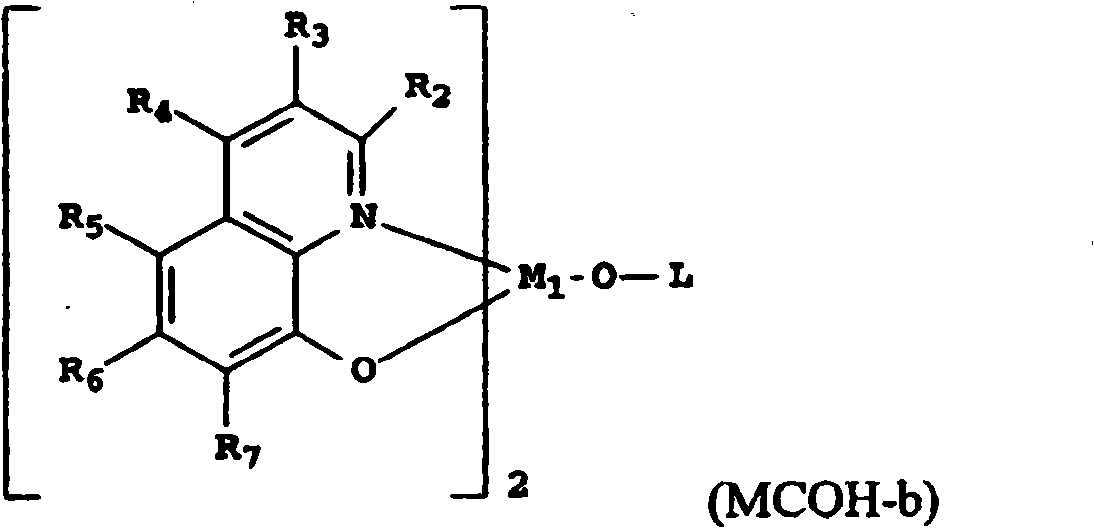Hybrid fluorescent/phosphorescent oleds
A fluorescent emission and fluorescent host technology, which is applied in semiconductor/solid-state device manufacturing, organic semiconductor devices, semiconductor devices, etc., can solve the problems of limiting the total efficiency of white devices and limited blue light output efficiency, and achieve the effect of improving efficiency.
- Summary
- Abstract
- Description
- Claims
- Application Information
AI Technical Summary
Problems solved by technology
Method used
Image
Examples
Embodiment 1-1 to 1-4
[0482] An EL device (Device 1-1) satisfying the requirements of the present invention was constructed in the following manner:
[0483] 1. A glass substrate coated with an approximately 25 nm layer of indium tin oxide (ITO) as the anode was sequentially sonicated in a commercial detergent, rinsed in deionized water, and exposed to oxygen plasma for approximately 1 minute.
[0484] 2. Next, a hole transport layer of N,N′-di-1-naphthyl-N,N′-diphenyl-4,4′-diaminobiphenyl (host-7 or NPB) was vacuum deposited ( HTL) to a thickness of 75nm.
[0485] 3. Vacuum deposit an exciton / electron blocking layer (EBL) of 4,4',4"-tris(carbazolyl)-triphenylamine (host-6 or TCTA) to a thickness of 10 nm.
[0486] 4. A 5nm light-emitting layer (LEL 1) consisting of a mixture of Host-8 as host and Emitter-1 as blue fluorescent emitter present at a concentration of 1 wt% relative to the host was then vacuum-deposited on the exciton blocking layer.
[0487] 5. A 5 nm thick spacer layer without dope...
Embodiment 2-1 to 2-5
[0498] An EL device (device 2-1) satisfying the requirements of the present invention was constructed in the same manner as devices 1-1 to 1-4, having the following elements: ITO|NPB(75nm)|TCTA(10nm)|Host-8+1% Emitter-1 (5nm) | Host-13 (10nm) | Host-13+8%Ir(ppy) 3 (20nm)|Bphen(25nm)|LiF:Al.
[0499] The device shows a blue fluorescent dopant and a green phosphorescent Ir(ppy) 3 Emission of dopants. at 1mA / cm 2 The luminous efficiency is 39.2cd / A, the CIE (x, y) is (0.232, 0.425), and the external quantum efficiency is 14.2%. Luminous efficiency and EQE are still high at lower current densities. Note that host-13 (spacer and phosphorescent host) has a triplet energy of 2.57 eV compared to host-8 (2.67).
[0500] An EL device not satisfying the requirements of the present invention was constructed in the same manner as 2-1, except that the blue fluorescent emitter was Emitter-2. The concentration was 1% in 2-2, 2% in 2-3, 5% in 2-4, and 7.5% in 2-5. Comparative Example 2-...
Embodiment 3-1
[0504] An EL device (device 3-1) satisfying the requirements of the present invention was constructed in the same manner as devices 1-1 to 1-4, having the following elements: ITO|NPB(75nm)|TCTA(10nm)|Host-22+1% Emitter-1 (5nm) | Host-13 (10nm) | Host-13+8%Ir(ppy) 3 (20nm)|Bphen(20nm)|LiF:Al.
[0505] The device shows a fluorescent dopant from blue and a green (Ir(ppy) 3 ) emission of the phosphorescent dopant. at 1mA / cm 2 , the luminous efficiency is 33.2cd / A, the CIE (x, y) is (0.220, 0.380), and the external quantum efficiency is 13%. Luminous efficiency and EQE are still high at lower current densities. The fluorescent host in the device has a HOMO of -5.59 eV and a triplet energy of 2.76 relative to the fluorescent emitter with a HOMO of -5.69, and the spacer and phosphorescent host with a triplet energy of 2.57.
PUM
 Login to View More
Login to View More Abstract
Description
Claims
Application Information
 Login to View More
Login to View More - R&D
- Intellectual Property
- Life Sciences
- Materials
- Tech Scout
- Unparalleled Data Quality
- Higher Quality Content
- 60% Fewer Hallucinations
Browse by: Latest US Patents, China's latest patents, Technical Efficacy Thesaurus, Application Domain, Technology Topic, Popular Technical Reports.
© 2025 PatSnap. All rights reserved.Legal|Privacy policy|Modern Slavery Act Transparency Statement|Sitemap|About US| Contact US: help@patsnap.com



